The daffodils are beginning to make an appearance in North-East Scotland. This beautiful plant is a welcome sign of spring’s arrival and a great opportunity to celebrate its old and new traditions and folklore. Here are some ways to enjoy and explore the beauty of daffodils. Narcissus is the botanical name for the daffodil genus. Narcissi is the plural noun.

1. Growing a variety of daffodils.
If you can afford to buy different types then this can be very interesting for children to see the variety and diversity that exists. The photos in this blog post are of ones that I’ve mainly planted in my garden. Fun can be had choosing which varieties to buy, based on time of year they flower, height, colour, spacing, location, name and so on. It can also help children recognise that bulbs have slightly different needs. The RHS have generic advice about growing daffodils.
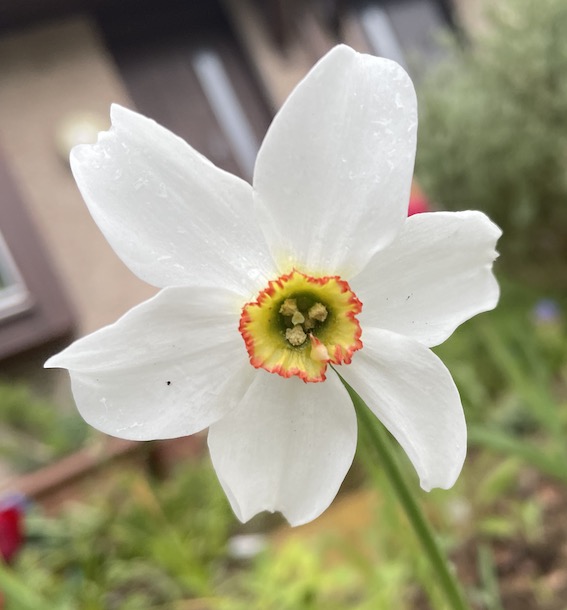
2. Look out for the daffodils appearing
Daffodils are a great plant to watch grow as they do so quickly. Capture this using a photo each day and measure its progress. What do your children wonder and think as they see a daffodil grow? For example, are all daffodils the same size? Sing “One Little Daffodil“. This finger action song is beautifully illustrated in this video by Dany Rosevear and is all about daffodils popping up!
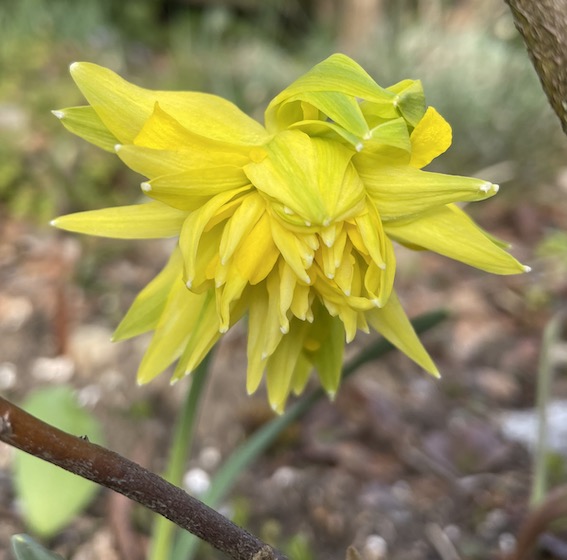
3. Going for a daffodil walk
Some locations such as the NTS Threave Garden and Estate are famous for their drifts of daffodils. However, these days, it’s amazing the variety that can be found in many places. Once daffodils have begun to really grow in your neighbourhood or local area, then your class or a group of children may be interested in going for a walk to see the different types growing and the variety. How many different types do you think you will see? How do you recognise a daffodil from another spring flower? What makes a daffodil a daffodil?
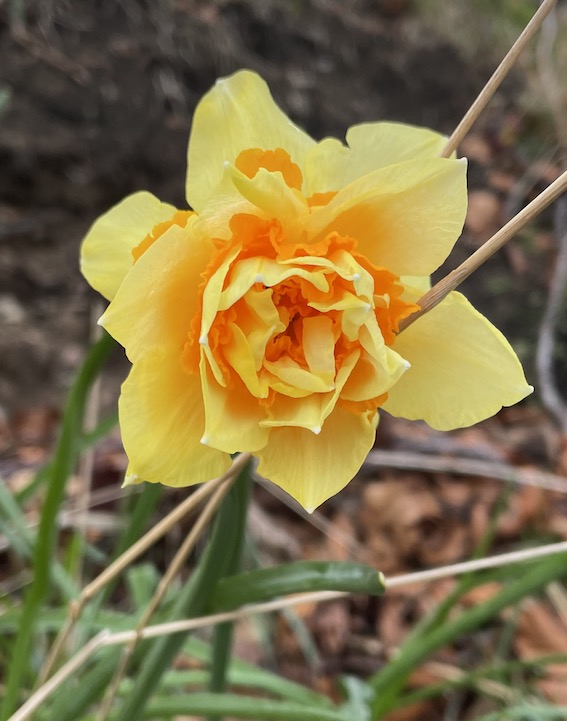
4. Collecting the colours of daffodils.
This could be digitally or through taking a tiny piece of a petal and creating a colour palette. This blog post shows the variety of golden colours that can be seen in the spring on just one walk. Are daffodils always golden?
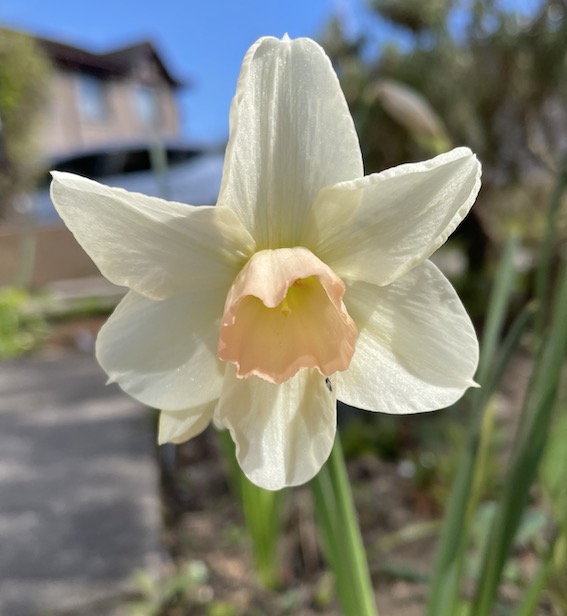
5. Capture the strength of a daffodil.
Most of the time we assume flowers to be fragile, easily broken and unable to withstand much variety in weather. If you take a slow-motion video of a drift of daffodils on a windy day, then this will demonstrate how they cope in such conditions. Was Wordsworth’s description “Fluttering and dancing in the breeze” apt or do your children have better phrases?
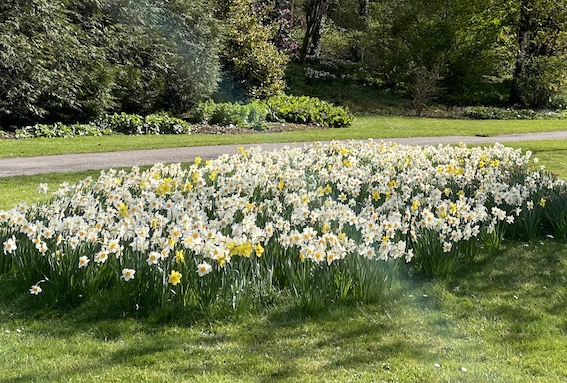
6. Tell the story of Echo and Narcissus outside
The story from my childhood that characterised daffodils was the Greek or Roman myth about Echo and Narcissus which continues to capture children’s imagination. Below is my own version, that I tell orally when children show an interest in daffodils or discover them growing outside. It works well if acted out, in an informal way too as the story is told.
Echo was a nymph, a beautiful spirit of nature who loved the woods and mountains. Echo also loved to talk. She was a chatterbox and had to have the last word in any conversation.
One day, Echo’s ability to chatter got her into a lot of trouble. Zeus was spending time with the wood nymphs and did not want to be disturbed. When his wife, Hera, came looking for him, Echo distracted her with conversation, allowing Zeus to escape. When Hera realised what Echo had done, in anger, she prevented Echo from ever speaking first. She could only repeat the final words of others.
Echo was mortified. In shame and frustration she ran away and hid in the mountain caves and cliffs and no longer lived with the other nymphs. One day she saw Narcissus, a handsome youth out hunting. Echo fell in love at first sight, and followed him, answering his calls, the only way she could, by repeating his last words. When she did have the courage to reveal herself to Narcissus, he dismissed her. He did not care for her.
In sorrow, Echo returned to the mountains and caves. She was so full of grief that she no longer cared whether she lived or died. She slowly faded away. Eventually her bones became rocks. All that was left of Echo was her voice which can still be heard today.
Zeus and the other gods saw Echo pine away. They knew that Narcissus had treated other nymphs badly too because he was so vain and proud of his handsome looks. He thought he was more important than anyone else. So they decided he needed to be punished and feel the pain he was causing others.
Shortly, Narcissus went out hunting again in the mountains. As he passed a pool of water, he decided to stop for a quick rest and drink. As he leant over the water, he saw his own reflection, but did not recognise it to be his own. He thought it was a beautiful water nymph living in the pond. Every time he tried to reach into the water to touch the nymph, the reflection disappeared with the ripples. As the water became still, the reflection returned. Narcissus fell completely in love with his reflection. He could not and would not leave the pond. Eventually he also pined away and died at the edge of the water, forever under the spell of his own beautiful reflection. As a reminder to others of Narcissus, the gods created daffodils which grew beside the pond. They are a symbol of beauty, self-obsession and unreturned love to this day.
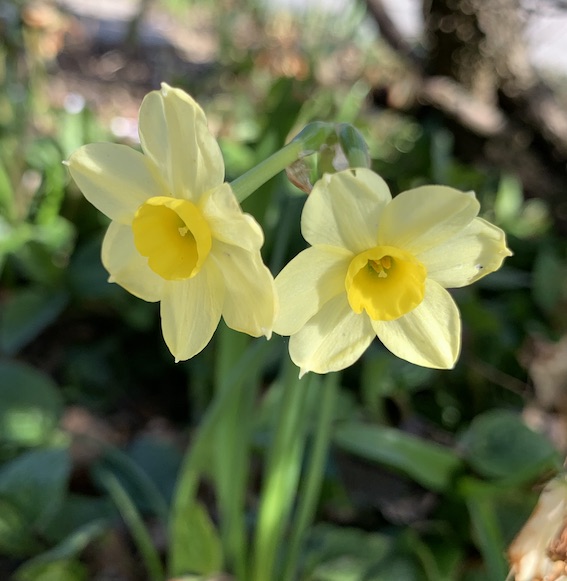
7. The Daffodil Principle
I first heard this story several years ago and it struck a chord about the need for beauty in our lives. It is a good one to discuss before or after planting daffodils and about undertaking tasks for the love of it and to benefit others. As far as I am aware it is a true story.
Somewhere near Lake Arrowhead in California is a little church with a sign that says “Daffodil Garden” on the far side of the graveyard. In spring, if you follow the path through the gravestones, you are in for a big surprise. In the property beside this church, all you can see, is thousands of daffodils of different colours and types. They cover the hills, slopes and land as far as you can see.
It’s possible to walk up to the house and there you will find a hand-written poster that states:
50,000 bulbs
Planted one at a time, by one woman,
two hands, two feet and very little brain
Began in 1958
This is The Daffodil Principle. An unknown woman has forever changed the world she lives in by her act of planting bulbs. She has brought a little more beauty, inspiration and joy into the lives of herself and others by a frequent, regular, sustainable act of passion.
Perhaps one of the greatest things we can do is something small, little and often, that makes a difference over time. A positive baby-step we can each do, that quietly makes our world a little more beautiful and better place to be in many years to come.
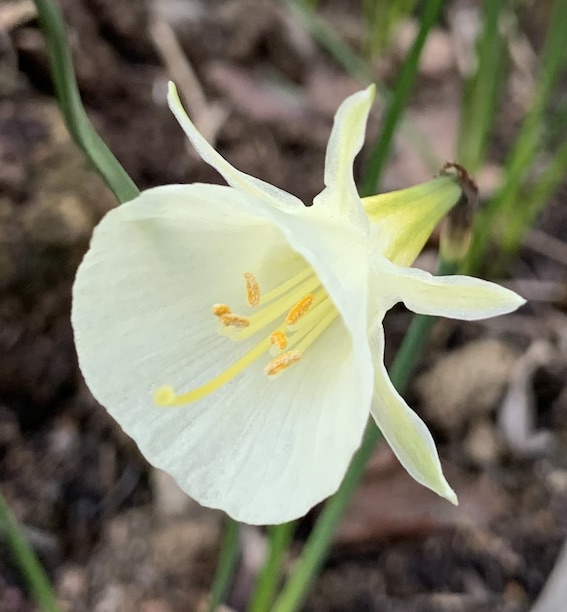
8. St Francis, Daffodils and the Easter Bunny
This story is based on Saint Francis. He was a nature lover, whose best friend was a rabbit. All the animals in the forest loved Saint Francis and decided to give him a gift, a nest full of brightly coloured eggs. The rabbit had asked the daffodil for it’s brilliant yellow colour, the crocus for it’s blue, and violet for the purple.
Saint Francis was so overwhelmed with joy, in receiving such a lovely present that he proclaimed that from now and forever, every year a basket full of coloured eggs would return in memory of Rabbit’s gift. So to this day, the tradition of the Easter bunny continues.
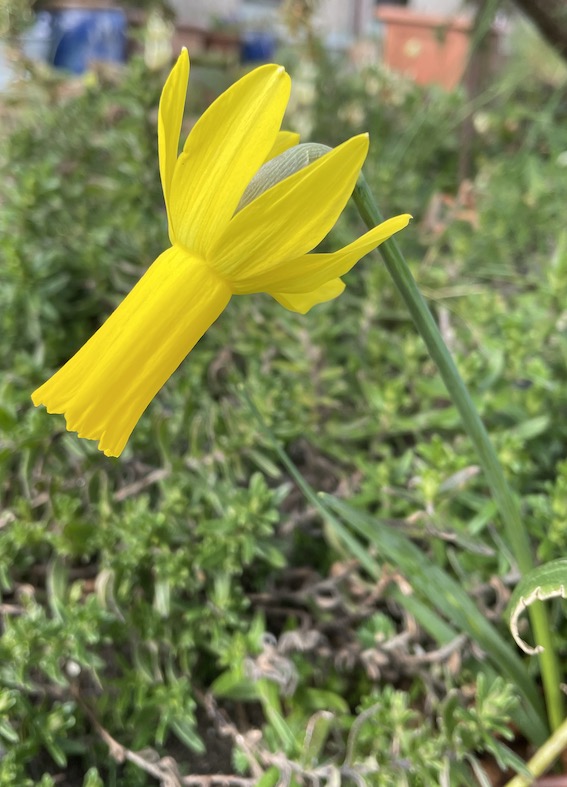
9. Hold a Daffodil Tea Party
In the spring, daffodil tea parties remain popular. The daffodil is the national flower of Wales, which celebrated St David’s Day on 1st March so this month is particularly apt for such celebrations. If you are fund-raising, then consider making a donation to the Marie Curie Cancer Care – March is their big fundraising month as this charity’s symbol is a daffodil. It makes for an ideal opportunity to hold an outdoor tea party with your class or group of children.
- Ask your children to decide the best place. Amongst the daffodils or where you get a view of them? Think about what would be needed to make the tea party work well.
- You may want to bake a Daffodil Cake. NB This does not contain any part of a real daffodil as no part of a daffodil is edible.
- Will someone recite Wordsworth’s famous poem, Daffodils?
- Consider which story would work best. Will there be an Easter Bunny theme and a treasure hunt for colourful eggs? It may link nicely to making Pace eggs using celandine flowers and onion skins.
- Ask the children to consider the Daffodil Principle and how their class could do a small, significant act of stewardship which brings a little more beauty into the world.
- Re-tell the story of Echo and Narcissus and enjoy hunting for beautiful or interesting reflections.

10. Is it okay for children to eat daffodils?
No. They are potentially harmful – as are many other common garden plants. There is no need to panic. Almost all children are very sensible and it won’t even occur to them to do so. If you have children who like to taste everything as their way of exploring their environment then you need to be aware of this risk. Also, don’t plant daffodils beside onions – very occasionally people have been known to mistake a daffodil bulb for an onion. If you are worried, please have a look at this blog post about poisonous plants. The RHS information about daffodils doesn’t mention the risk but does list them here as “somewhat poisonous: skin irritant.”
Anymore daffodil stories or celebrations and I would love to know about them. Meanwhile enjoy the warm weather and spring wherever you live in the northern hemisphere.
This blog post originally appeared back in April 2010 and was then updated in March 2014.




















This is a wonderful story, Juliet. I think we often get so focused on the nuts and bolts of the reduce-reuse-recycle part of Earth Day that we forget that a part of our job here is to create a little more beauty as well. Thanks!
What a lovely story. You’ve made me want to run out & plant daffodils! We will mark Earth Day by transplanting a camellia my dad grew from seed in our yard. A thing of beauty indeed!
Thanks for your comments. It all really came about when I was walking my dog yesterday and taking photos of all the spring growth.
As a 6yr old child, I remember planting daffodils at my father’s house. He asked us not to pick the daffodils when they bloomed so we could have more each year and we stuck to that rule.
I forgot to mention that the place does exist. It is in running Springs (S. Bernardino Mountains). Some people who live in California kindly confirmed this for me.